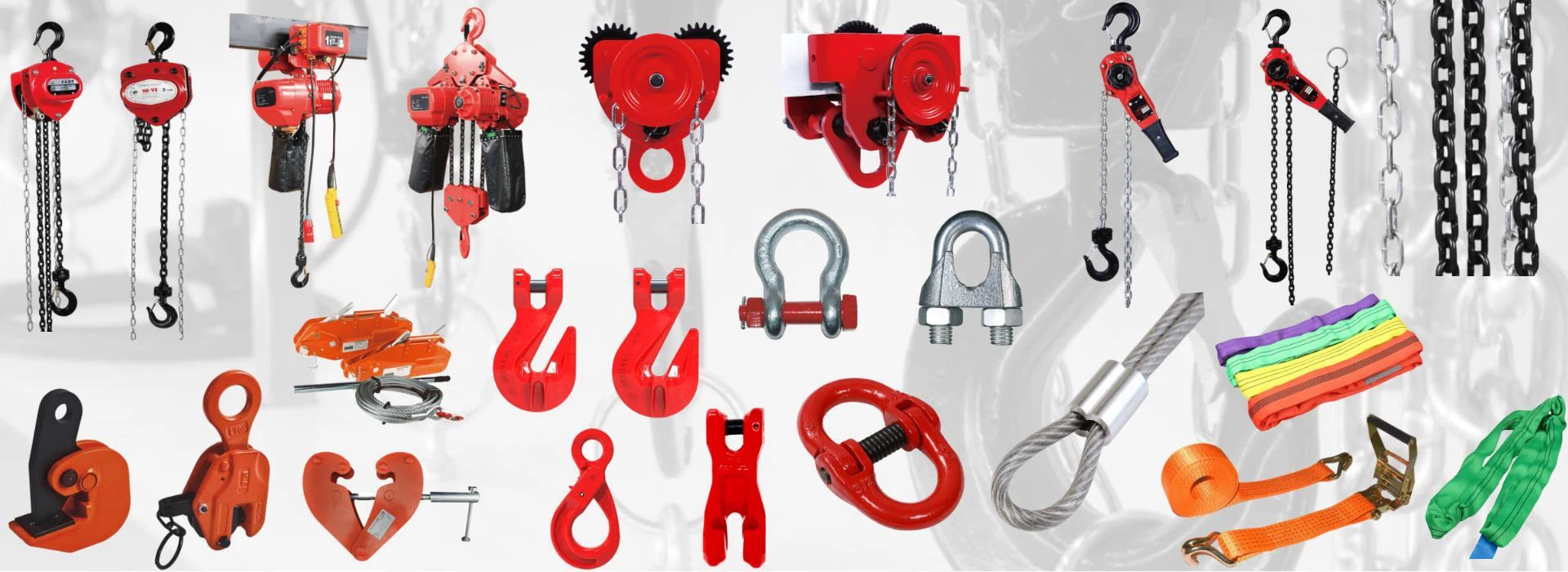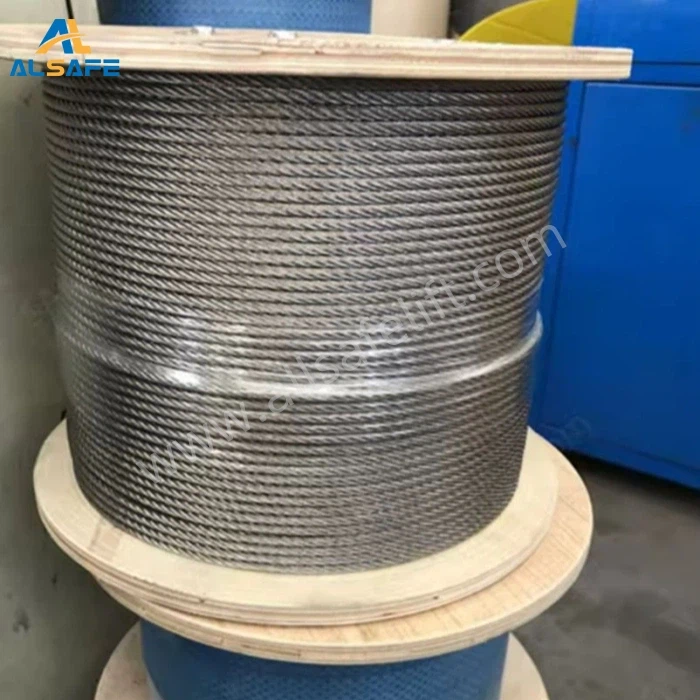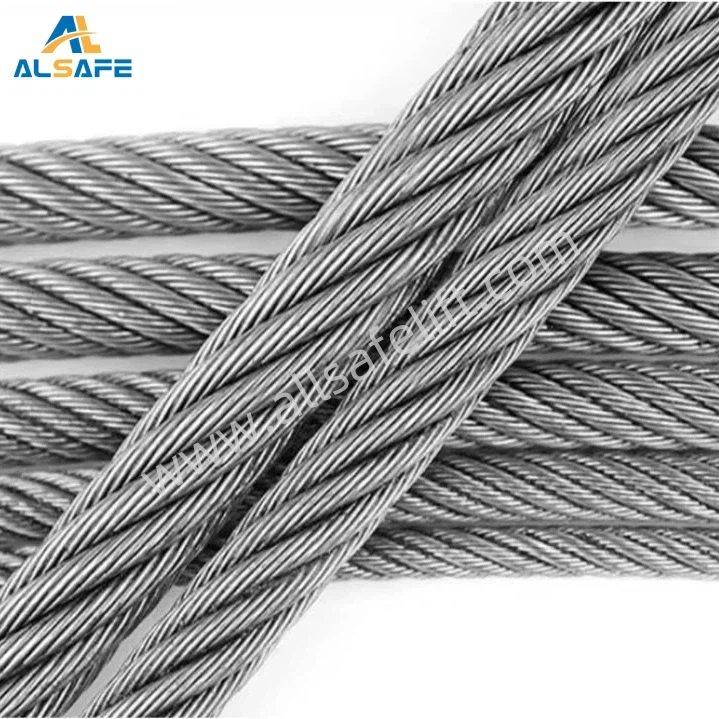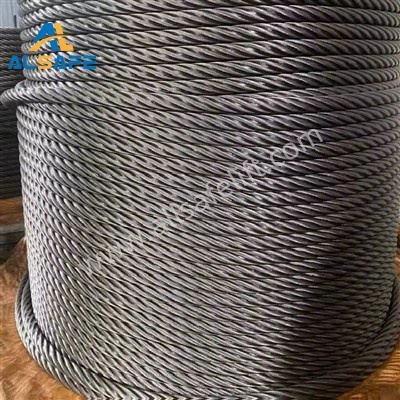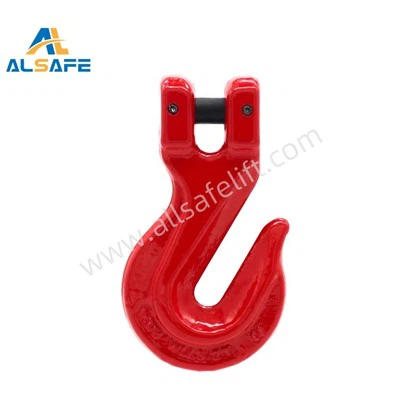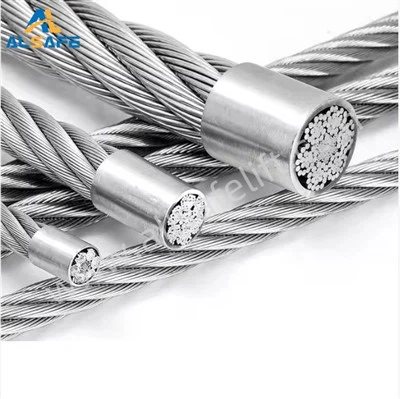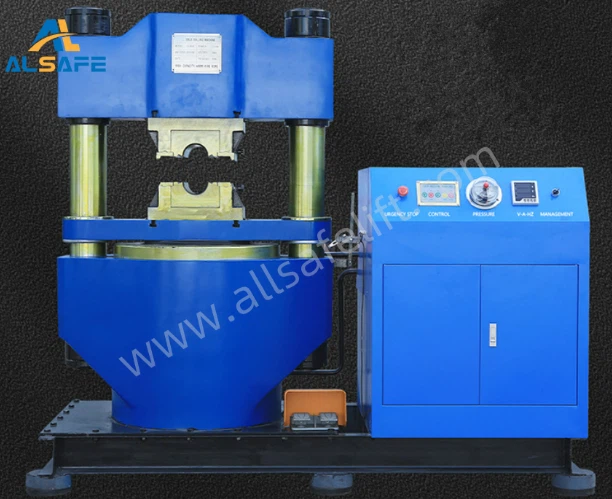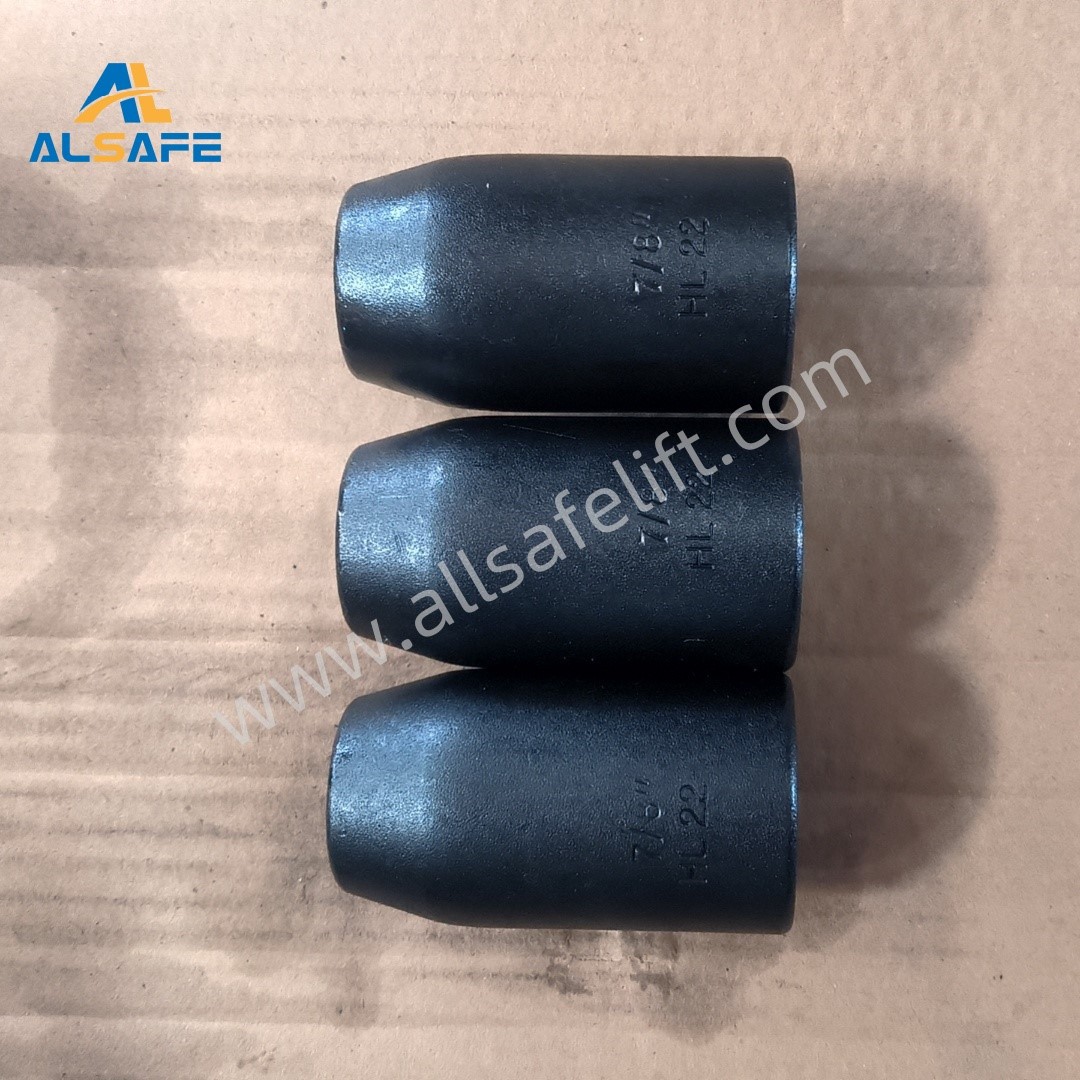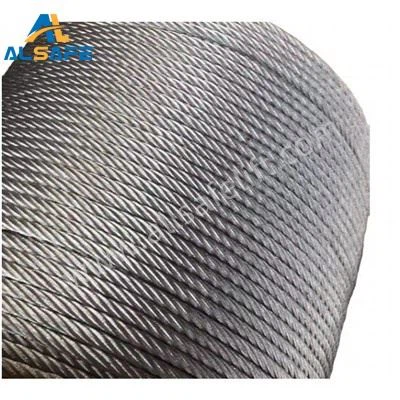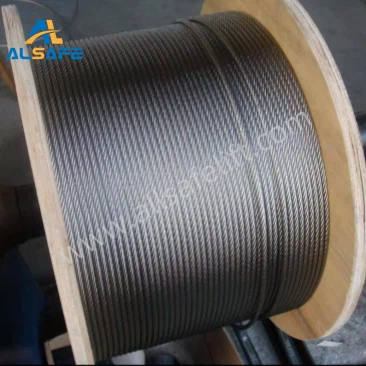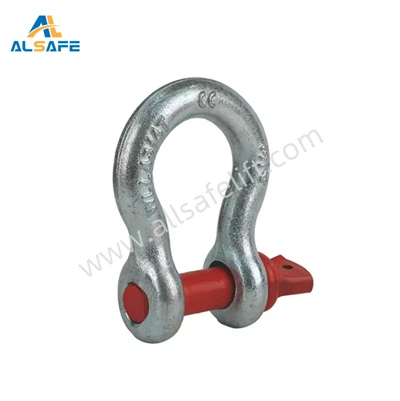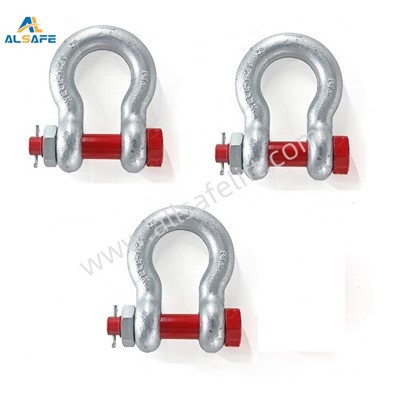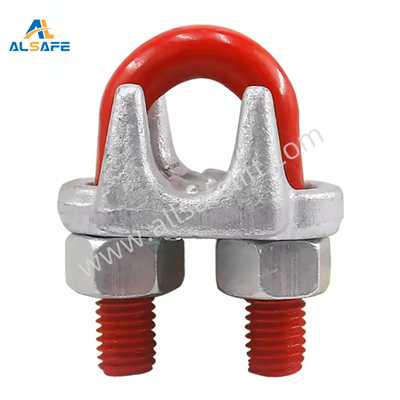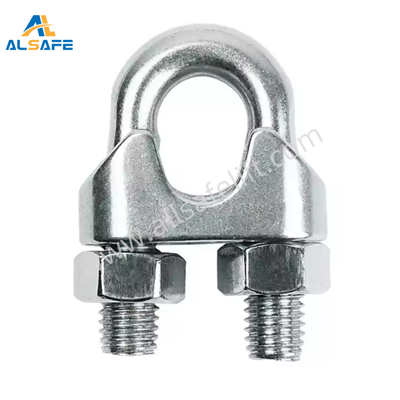Steel Wire Rope&Accessories
Known for high quality product and excellent , timely service . AllSafe Group is a leader in the fields of lifting equipment and riggings.
With a wide range of premium products , hardware riggings and material handing equipment , Our top priority is to deliver high quality products while ensuring complete customer satisfaction.
Tested and certified, our products are genuine and meet international standards and requirements. Our wide range of material-handling equipment and hardware riggings include chain block , lever block , electric hoist , plain/geared trolley , G80 chains , webbing sling , ratchet tie down , steel wire rope , shackles, turnbuckles, wire rope clips , among others.
Why Choose Us?
High Quality
Prefessional QC team with 20 Years' experience. Tested and certified, our products are genuine and meet international standards and requirements.
Complete Range of Products
Our wide range of material-handling equipment and hardware riggings include chain block , lever block , electric hoist , plain/geared trolley , G80 chains , webbing sling , ratchet tie down , steel wire rope , shackles, turnbuckles, wire rope clips , among others.
Quality Control
Grade 80 & Grade 100 Materials used for all lifting equipment & riggings. With a wide range of premium products, hardware riggings and material handing equipment, Our top priority is to deliver high quality products while ensuring complete customer satisfaction.
Steel wire rope is a complex mechanical device that has many moving parts all working in tandem to help support and move an object or load. In the lifting and rigging industries, steel wire rope is attached to a crane or hoist and fitted with swivels, shackles or hooks to attach to a load and move it in a controlled matter. It can also be used to lift and lower elevators, or as a means of support for suspension bridges or towers.
Steel wire rope is a complex mechanical device that has many moving parts all working in tandem to help support and move an object or load. In the lifting and rigging industries, steel wire rope is attached to a crane or hoist and fitted with swivels, shackles or hooks to attach to a load and move it in a controlled matter. It can also be used to lift and lower elevators, or as a means of support for suspension bridges or towers.
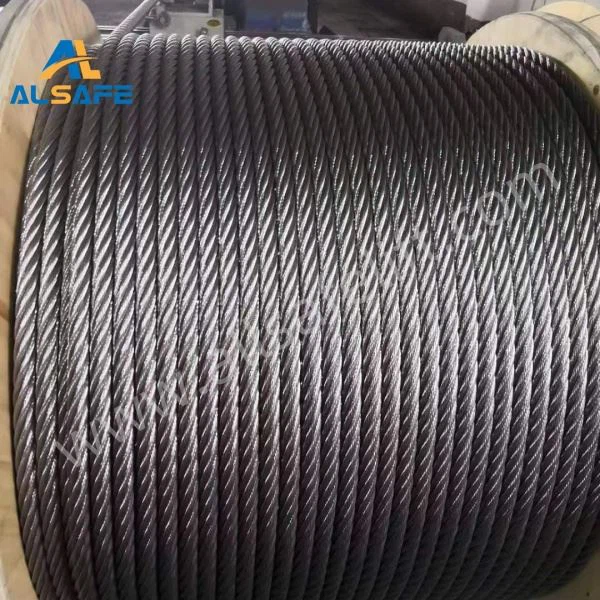
● Single stranding
Consisting of one, two, three or more concentric layers of wires, twisted in a spiral; Ropes single lay twisted only round wire, usually called spiral ropes. Spiral ropes in the outer layer having shaped wire ropes are called closed and semi-enclosed structured; on loss of each shaped wire rope is held in adjacent wires. Ropes single stranding intended for later weave into a rope, called strands;
● Double stranding
Consist of strands twisted in one or more concentric layers. These cables may be monolayer or multilayer. Multilayer lay has high flexibility and large bearing surfaces, and moreover, can impart rotation-resistant properties of the rope. Double stranding ropes are designed to follow lay, called strands;
● Triple stranding
Consisting of a double lay rope (strands) twisted in concentric layer.
Materials of Steel Wire Rope
Different applications for wire rope present varying demands for strength, abrasion and corrosion resistance. In order to meet these requirements, wire rope is produced in a number of different materials.
● Stainless Steel
This is used where corrosion is a prime factor and the cost increase warrants its use. The 18% chromium, 8% nickel alloy known as type 302 is the most common grade accepted due to both corrosion resistance and high strength. Other types frequently used in wire rope are 304, 305, 316 and 321, each having its specific advantage over the other. Type 305 is used where non-magnetic properties are required, however, there is a slight loss of strength.
● Galvanized Carbon Steel
This is used where strength is a prime factor and corrosion resistance is not great enough to require the use of stainless steel. The lower cost is usually a consideration in the selection of galvanized carbon steel. Wires used in these wire ropes are individually coated with a layer of zinc which offers a good measure of protection from corrosive elements.
The Basic Elements of Steel Wire Rope
These elements are available in various models / designs, depending on the physical requirements of the steel wire rope and its intended application. A single strand can in certain cases be used quite properly as a steel wire rope.
A fourth component, that is equally as important for the steel wire rope's performance as the design and quality of the three basic components, is the lubrication of the core and the strands.
Steel wire
The minimum tensile strength of the steel wire defines the classification of the steel wire rope. The tensile strength of high quality steel wires in standard product range is as follows:
● Ungalvanised wires (mainly elevator cables)
1,370 N/mm² (140 kp/mm²).
● Zinc galvanised wires (mainly fishing)
1,570 N/mm² (160 kp/mm²).
● Zinc/alum. galvanised wires (mainly fishing)
1,570 N/mm² (160 kp/mm²).
● Stainless steel wires, tensile strength dependent on size
1,670 N/mm² (170 kp/mm²).
● Zinc galvanised wires (mainly industry)
1,770 N/mm² (180 kp/mm²).
● Zinc galvanised wires (mainly industry)
1,960 N/mm² (200 kp/mm²).
Strands
A strand is laid by a minimum of three wires that are arranged in many different designs (geometric patterns). The strand is almost always arranged around a centre wire. The wires are made from either steel or fibre (natural or man-made), or a combination of these.The quantity, size and material from which the individual wires are made characterise the rope and its qualities. Fewer, thicker wires create greater abra- sion resistance, whereas a greater number of thinner wires creates greater flexibility.
Core
Almost all steel wire ropes have a core. The core's function is to support and retain the strands in their respective positions while the steel wire rope is being used.
The core may be made of either steel, fibre, or a combination of the two. The core is usually one of the following types:
● FC (natural or man-made fibre, Fibre Core).
● WSC (steel core, Wire Strand Core). The WSC is a strand and is of exactly the same construction as the strands in the steel wire rope.
● IWRC (steel core, Independent Wire Rope Core).
Key Considerations for Selecting the Right Steel Wire Rope
Steel wire ropes serve as fundamental components across a spectrum of industries, offering critical support in lifting, rigging and material handling operations. Choosing the appropriate steel wire rope involves several crucial considerations, each impacting performance, safety, and efficiency in various applications.
Application and usage
Understanding the specific task and its requirements is paramount. Whether its lifting heavy loads, securing cargo, or supporting structures, different applications demand ropes with varying strengths, flexibility and durability.
Load capacity and working conditions
Determining the expected load capacity and the working environment's conditions is crucial. Factors like the weight to be lifted, operational temperatures, exposure to chemicals, abrasion or moisture influence the choice of rope material and construction.
Rope diameter and construction
The diameter and construction type of the wire rope significantly impacts its strength and flexibility. Assessing the correct diameter in correlation with the load-bearing capacity ensures safety and optimal performance. The rope specifications must be compatible with any rigging system's drums, sheaves, or terminations. Failure to identify this compatibility can result in decreased rope life and potentially catastrophic failure.
Materials and coating
Consider the material composition - whether galvanised, stainless steel, or other variants - based on environmental conditions and corrosion resistance requirements. Additionally, coatings like galvanisation or lubrication can enhance durability and protection against wear and tear.
Configuration and design
The wire rope's configuration, such as the number of strands, wires per strand, and construction types determines flexibility, bending fatigue resistance, and load-bearing capabilities. Choosing the right configuration aligns with specific usage needs.
Maintainance and longevity
Regular inspection, maintenance and proper care are essential for extending the lifespace of the wire rope. The inspection frequency of wire ropes depends on the regularity of the rope's usage and other factors.
Check regularly if the steel wire rope has corroded. Rust has different degrees:
● Surface or fly rust. The wire surface isn't affected. There is a slight cast of rust. Remove this and relubricate the wire rope with a suitable oil.
● Wire surface slightly corroded. No noticeable reduction in the wire diameter. Try to remove the corrosion. Is this possible? Then relubricate.
● Wire surface is corroded. Noticeable reduction of wire diameter. Slight gap between the outer wires.
● Wire surface strongly corroded. Clear reduction in wire diameter. Significant gap between outer wires.
● Pitting corrosion. Wire surface strongly corroded. Significant reduction in wire diameter. Gap between the outer threads is more than half the original diameter.
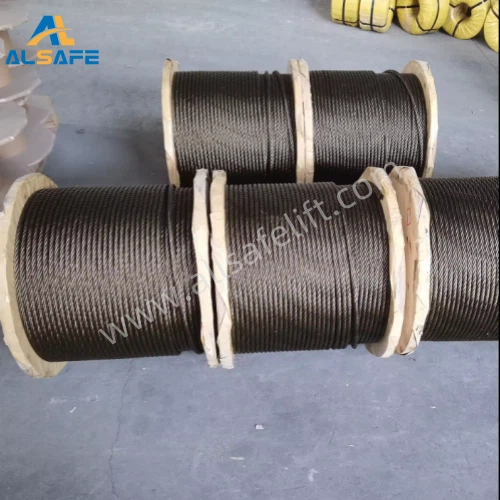
What Is Steel Wire Rope Used for in Ship
Steel wire rope is a versatile piece of equipment. In moorings, it can be used for motion control, stationkeeping, and vessel positioning, among other things.
Beyond moorings, it can be used for other tasks such as guidance, tie down, hold back, lifting, and many more. Compared to chain, steel steel wire ropes have a higher strength to weight ratio, making them easier to install and lighter on the floating structure.
Steel steel wire ropes are mostly commonly constructed of many thin steel wires wound into strands, which are then wound around a central core into the final steel wire rope. The most commonly used configuration for this type of wire construction is six strand. The number of strands and wires in each strand (e.G. 6 × 19, 6 × 36, 6 × 61) are governed by required strength, fatigue and bending stiffness requirements for each application. During selection consideration, it is important to note that this construction can generate torque as tension increases.
Steel wire rope can also be constructed of only individual wires tightly spaced and wound without stranding, known as spiral strand. This construction commonly uses a sheath for protection since it is much more susceptible to damage. To eliminate torque, the rope construction (spiral strand, half locked and full locked coils) uses layers of wires (or bundles of wires) wound in opposing directions to obtain the torque balanced characteristics.
Steel wire rope has a lower fatigue life and is more sensitive to damage and corrosion compared to chain. Steel wire rope segments in mooring lines are to be protected against corrosion attacks throughout the design life, either through coating of the strands or sheathing of the rope. Regular inspections are recommended throughout the design life to ensure the protection is intact and corrosion is within acceptable limits.
Termination connections also are available in various sizes to accommodate any size of mooring components. All steel wire ropes and components are certified and approved for use offshore by facilities managers.
Steel Wire Rope Deep Dive: Types and Strengths
Combining strength with flexibility, steel wire rope helps operations of all sizes move heavy loads where they need to go with safety and ease.
Because every project has different requirements, various types of steel wire rope are designed and fabricated to serve different purposes. With a variety of orientations, strengths, and load capacities, it's important to know exactly which variety works best for your job. Here's a breakdown of the major categories.
● General purpose steel wire rope
The "class" of steel wire rope refers to the number of wires that compose a strand, as well as how many strands surround the core. For example, 6×31 FC steel wire rope consists of 6 strands containing 31 wires each, which are wrapped around a fiber core.
General purpose steel wire rope – the variety most commonly used for daily rigging operations such as lifting, overhead securement, pulling, and establishing tension – most often contains six strands and an independent steel wire rope core. Each of these strands can contain anywhere from 16 to 49 wires, with more wires increasing the flexibility of the rope.
General purpose steel wire rope can range in diameter from ¼ inch to 6 inches, with larger diameter ropes having breaking strengths of hundreds or even thousands of tons.
● Crane steel wire rope
Most cranes and some overhead lifting and securement devices require specialized steel wire rope that prevents the load from rotating. This is often achieved by having layers of compacted strands, oriented in a tightly-knit pattern around a core and layed in alternating directions.
Compacted varieties of crane steel wire rope provide increased fatigue resistance, strength, stability, and abrasion resistance. Often considered the strongest steel wire rope on the market, these types of steel wire rope are perfect for mining, industrial, construction, logging, and oilfield applications.
● Steel wire rope slings
Finally, in addition to customized lengths and types of steel wire rope, a qualified rigging equipment provider can also supply pre-fabricated steel wire rope slings. These slings are outfitted with eyes or sockets that affix the load to a lifting device. Steel wire rope slings come in dozens of orientations, sizes, and diameters, allowing for ultimate customization when outfitting your rigging operation.
FAQ
Q: What is a steel wire rope used as?
Q: What is the difference between steel cable and wire rope?
Q: What does steel wire rope do?
Q: How strong is steel wire rope?
Q: How do I choose a steel wire rope?
Application and usage. Understanding the specific task and its requirements is paramount.
Load capacity and working conditions.
Rope diameter and construction.
Materials and coating.
Configuration and design.
Q: What steel wire rope is most commonly used?
Q: What are the three parts of a steel wire rope?
Steel wires that form a strand.
Strands that are wrapped around a core.
The core.
Q: What is the class of steel wire rope?
Q: Does steel wire rope rust?
Q: What are the parts of the steel wire ropes?
Q: What is steel wire rope?
Steel wire rope is a complex mechanical device that has many moving parts all working in tandem to help support and move an object or load. In the lifting and rigging industries, steel wire rope is attached to a crane or hoist and fitted with swivels, shackles or hooks to attach to a load and move it in a controlled matter. It can also be used to lift and lower elevators, or as a means of support for suspension bridges or towers.
Q: What's the difference between cable and wire rope?
Q: What is steel wire rope used for in ship?
Q: Is steel wire rope flexible?
Q: Why use steel wire rope?
Q: What is the most widely used material for steel wire rope?
Q: What is the strongest steel wire rope?
Q: Does steel wire rope stretch?
Q: How are steel wire ropes classified?
Q: Why is wire rope galvanized?

